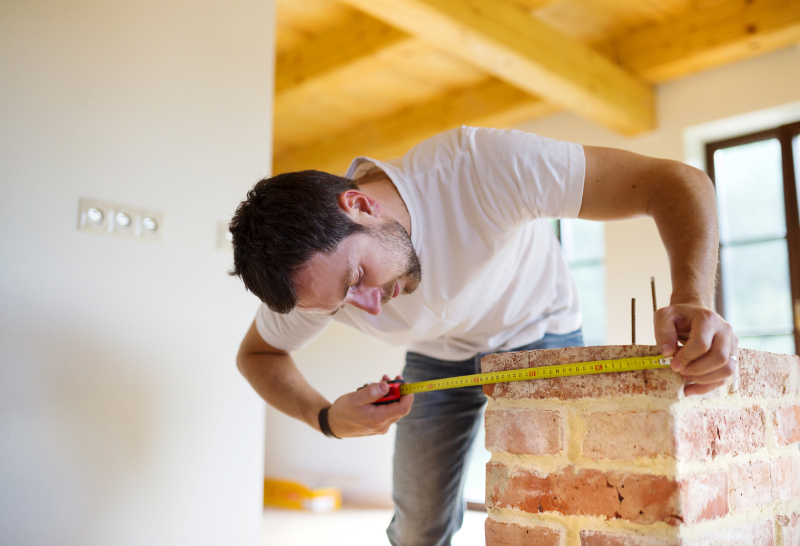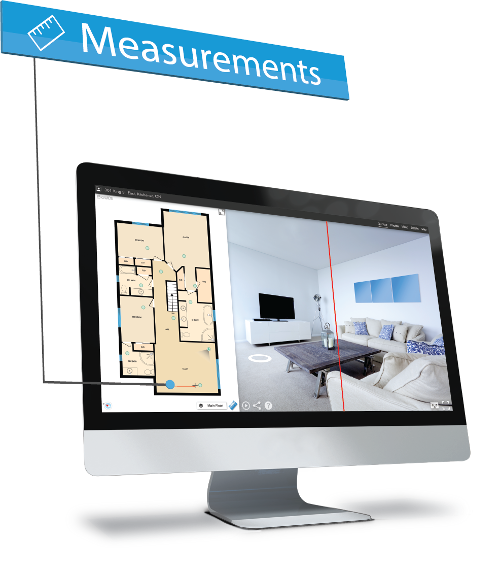You are viewing our site as an Agent, Switch Your View:
Agent | Broker Reset Filters to Default Back to ListThe Risk of Using Tax Data in Your Listings
April 17 2019
 Real estate marketing is becoming more and more competitive. To attract potential buyers and give them enough information to make an offer quickly, you may be providing room measurements and floor plans. Indeed, according to the National Association of Realtors, these details are the most important metrics home buyers use when looking for a new house.
Real estate marketing is becoming more and more competitive. To attract potential buyers and give them enough information to make an offer quickly, you may be providing room measurements and floor plans. Indeed, according to the National Association of Realtors, these details are the most important metrics home buyers use when looking for a new house.
As a Realtor, you may be opening yourself up to liability if you provide measurements that were not taken professionally. While many real estate agents use municipal tax record data or MPAC numbers, these numbers are mere estimates that may mislead your buyers and open you up to legal risk.
The Problem of Tax Data
 The square footage measurements taken to determine a property's tax are measured from the exterior. At no point does someone walk into the house to look at its specific nuances. For tax purposes, all the government needs is an estimate. However, buyers expect the square footage of a listing to reflect the actual amount of interior living space.
The square footage measurements taken to determine a property's tax are measured from the exterior. At no point does someone walk into the house to look at its specific nuances. For tax purposes, all the government needs is an estimate. However, buyers expect the square footage of a listing to reflect the actual amount of interior living space.
Measurements taken from the exterior of a home include the walls and other potentially unusable space. The width of the exterior walls along the whole house may actually add up to a significant amount of the total square footage, inflating the measurement.
A disgruntled homeowner might sue when they take their own measurements of the interior space and find it lacking. It is a risk to provide measurements for a property that you did not get professionally measured.
 The exterior walls are not the only problem. There are a number of ways that the tax data may be a serious over- or under-estimate. When a home is being measured for tax purposes, no one will look into the specific layout of the house to alter the measurement accordingly. This creates problems in a few different home types.
The exterior walls are not the only problem. There are a number of ways that the tax data may be a serious over- or under-estimate. When a home is being measured for tax purposes, no one will look into the specific layout of the house to alter the measurement accordingly. This creates problems in a few different home types.
For example, if the living room of your home has high ceilings and a gap in the second floor above the living room, all of that empty space will be counted as additional square footage in the tax data. They assume the second floor is just as large as the first, but sometimes it isn't.
On the other hand, tax data measurements may also be too small. After a homebuyer builds an addition on their home, it may be some time before the tax data are changed to reflect that. The same problem may happen after a mudroom is insulated, a patio is enclosed, or a loft is extended. The current homeowner may not be the person who made these changes, so you can't assume you'll be alerted to them.
If the square footage measurement is smaller than the actual living space of the home, you're missing out on a powerful selling tool and, potentially, more substantial offers.
How to Get Better Measurements
 Instead of relying on tax data, it is wise to get professional measurements and floor plans drawn up. A 360° virtual tour, like those created by the iGUIDE®, includes accurate, up-to-date measurements of the living space of the property. You, as the Realtor, can feel confident the measurements the iGUIDE provides are accurate. You reduce your liability, while also giving potential buyers the exact information they want. It's a smart decision to make your business more profitable and secure.
Instead of relying on tax data, it is wise to get professional measurements and floor plans drawn up. A 360° virtual tour, like those created by the iGUIDE®, includes accurate, up-to-date measurements of the living space of the property. You, as the Realtor, can feel confident the measurements the iGUIDE provides are accurate. You reduce your liability, while also giving potential buyers the exact information they want. It's a smart decision to make your business more profitable and secure.
Brought to you by Sara Penny, Communications and Marketing Manager at Planitar Inc., the makers of iGUIDE®. Follow the link for more information on how iGUIDE helps you save time, provides more features, and connect more with your clients.









